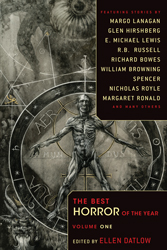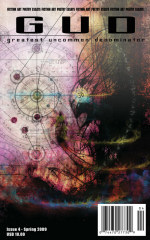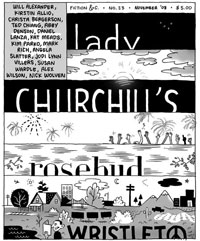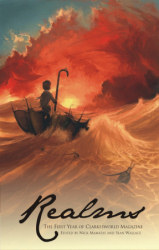It is said by some that semiprozines are publishing some of the best new writers. Who are the authors people should be on the lookout for?
Robert Neilson, Albedo One
The Albedo One authors who have impressed me most in recent times are Philip Raines & Harvey Welles, Colin Harvey, Nina Allan, Julian West, Will McIntosh and David D. Levine (his story in Albedo One is far better than his Hugo winner). I have also been mightily impressed with Dutch author Teis Teng but unfortunately most of his work is in Dutch. You can find some of his work in English in a collection from Babel Books called Systems of Romance (he wrote half the stories). Modesty forbids mention of my editorial colleagues.
Beth Wodzinski, Shimmer
A year or so ago I would have called out Aliette de Bodard — but she’s already well on her way, and is a Campbell nominee this year. I think she’s right at the beginning of a great career.
I’ve got my eye on Angela Slatter and Shweta Narayan; they seem to me to be poised for really broad success, and are terrific. Also terrific: Becca De La Rosa, Alex Dally MacFarlane, Vylar Kaftan, Caitlin Paxson, Alex Wilson, Josh Storey, Claude LaLumiere, and Amal El Mohtar. Well, I think everyone we’ve published is terrific.
If I can call out a few artists, too: Chrissy Ellsworth, Sandro Castelli, Aunia Kahn, and Carrie Ann Baade are amazing.
Hildy Silverman, Space & Time
There are some great ones out there. Maurice Broaddus is a terrific writer who I don’t think the Big Three have published yet, but are bound to discover at some point. Aliette de Bodard is popping up in a lot of places, and has been nominated for the 2009 Campbell award. Oh, and keep an eye on multiple-workshop grad Larry Hodges, who is finally getting around to sending out more of his work.
Sean Wallace, Fantasy Magazine
Where to start? Fantasy Magazine has a lot of new, exciting talent, between what was published last year and this year, or soon to be published: Camille Alexa, Erik Amundsen, Stephanie Campisi, Becca De La Rosa, Willow Fagan, Berrien Henderson, Darja Malcolm-Clarke, Gord Sellar, Rachel Swirsky, Genevieve Valentine, and many more. However, the field is full of new authors being published all over, and the zines listed on this website are a great start for a reader to dive right into!
Scott Andrews, Beneath Ceaseless Skies
I think there are lots of very good neo-pro short story writers being published these days in semiprozines. Beneath Ceaseless Skies has published a number of up-and-coming writers who’ve been Finalists or Winners of the Writers of the Future award, including Tina Connolly, Sarah L. Edwards, and Erin Cashier. Our stories from other newcomers such as Matthew David Surridge and Grace Seybold have also received strong reviews. And we’ve published two authors who are nominees for this year’s Campbell Award for Best New Writer–Tony Pi and Aliette de Bodard.
 Earlier today, the contents for Night Shade Book’s Best Horror of the Year 1 was listed on editor Ellen Datlow’s blog. The following stories from semiprozines were selected:
Earlier today, the contents for Night Shade Book’s Best Horror of the Year 1 was listed on editor Ellen Datlow’s blog. The following stories from semiprozines were selected: The 2008
The 2008 
 Established: 1996
Established: 1996 In 2008, Wyrm Publishing released
In 2008, Wyrm Publishing released